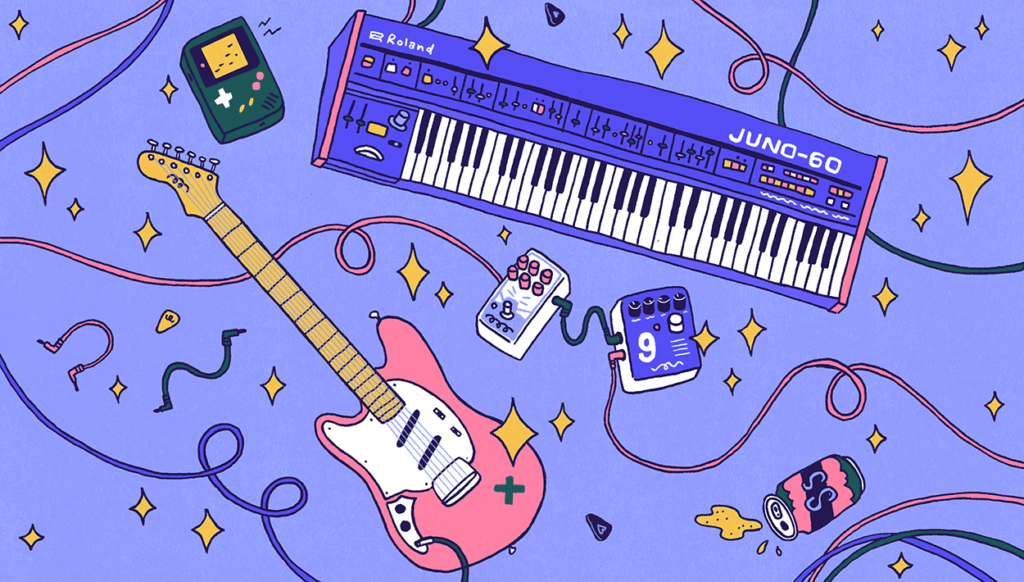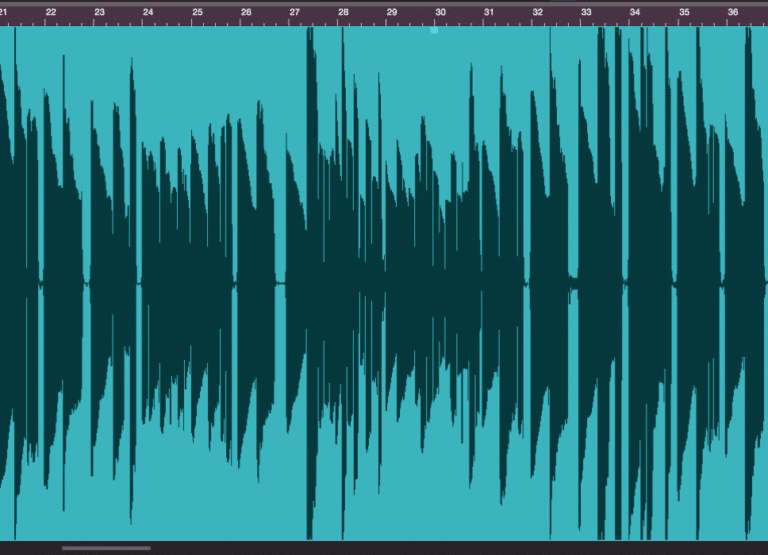Last Updated on May 26, 2023 by IDS Team
Guitar sampling is great for inspiring any guitarist, but did you know you can use it in more ways than one to spice up your production? Likewise, as a producer or electronic musician, lush guitar samples can make or break a track if used in the correct way.
However, without knowledge of the other side, you may end up falling back on VST instruments and pre-made loops. This article is for if you want to go beyond the basics and learn some creative ways to incorporate guitar samples into tracks from pop to rock, indie, alternative, industrial, and beyond.
1. Experiment With Handheld Recorders for Guitar Sampling
Handheld sampling is exactly what it says. Generally, it’s using a handheld recorder held near your source of sound. This creates a more rough and ready sample that you can modify depending on how slickly produced your track is. However, it creates a fantastic sound for alternative pop, rock, and indie music.
What Is The Best Portable Audio Recorder for Guitar Sampling?
To start off with this, we would recommend a handheld sampler like the Tascam DR – 0X7. This one samples in stereo and provides great clear sound yet is also easy to work with and portable. Click here to see listings available on reverb.com
Best for: When you need a relatively low-key and organic sample that you can be flexible with.
3. Get the Most Out of Hardware Samplers
Why might you want to use a hardware sampler for guitar? Adding some elements that cross lines between guitar and synthesis can take your production to the next level. It can really get you thinking about the sound of guitar like a synth player – and what builds it from the bottom up.
Hardware samplers mean you can combine your guitar samples with other FX, bring them together with a sequencer, and much more.
What is the Best Portable Handheld Sampler?
We recommend a great affordable handheld sampler like Teenage Engineering’s PO-33 for this. However, classic brands like Roland also have their own options with the Sp-404-SX at a higher budget.
How to Use Hardware Samplers for Guitar Sampling
Most hardware samplers have plenty of FX. Therefore, combining guitar sampling with a hardware sampler is an excellent way of using guitar samples in your live shows. A bigger budget hardware sampler like some of those by Arturia or Elektron (such as the model:samples) can give your samples a great live sound. Plus, they have all the benefits of a physical instrument that tend to suit guitarists best.
Best for: modifying the sound of your original sample and combining analog synthesis with guitar-based music.

3. Don’t Discount the Room Mics
How can you use room mics for guitar sampling? Depending on the type of mic you’re using (more on this later!) they can actually be a great source of samples. In fact, you can modify them to give you sounds slightly different from just plain guitar recordings.
Using Room Mics in Guitar Sampling and Recording
Even when you do this, the quality of your original sample is still important. It also still has an effect on your end result. However, this can be a great tip for when a sample doesn’t end up how you like it. Turning it into an atmospheric background means you can still use it even if it didn’t end up how you wanted.
Best for: atmosphere, especially for creating weird samples that are originally guitar based but which don’t end up sounding like guitar.
4. Choose the Right FX to Add
It’s easy to debate whether taking great samples in the first place with great playing is more important, or whether you can save bad samples with decent FX processing. In truth, there’s a bit of both involved. No amount of good recording equipment will fix a bad guitarist. Likewise, no matter how well you process it, you can’t always cover up a bad sample.
Why Use FX Processing on Your Guitar Samples?
Despite commitments to authentic sound, FX processing is still a really important part. This is what can get you a granular sound in terms of genre. A basic electric guitar sample can be warped beyond recognition for industrial or kept low-key for an indie-pop track.
Best for: Adding extra emotions or atmosphere to samples and defining your sound
5. Touch Up Guitar Sampling With Envelope Modification
You can use envelope modification to touch up guitar samples in many ways. One of the difficulties guitarists might encounter is there can be simply too much extra noise. Adjusting the decay and sustain can reduce this and make guitar samples sound crisper and cleaner.
Likewise, if your original samples are not very punchy, adding more attack can ensure that they hit hard enough.
How to Find the Perfect Sound for Guitar Sampling with ASDR Envelopes
The one thing to bear in mind is for an analog instrument like a guitar, there is a limit to what an envelope can fix. There’s no point in adjusting tons of envelope parameters if your original sample isn’t any good. But consider using the envelope creatively to warp samples and in the same way as you can use FX. Try giving your samples some really long decay, for example, for really weird-sounding guitar that you can then save to a pad…
Best for: Touching up samples after you’ve taken them
6. Choose the Right Mic
Mic choice is always important when taking great guitar samples. When using a handheld sampler, the reality is you don’t have much control over mic choice. Yet, you can add FX and touch ups later on during the processing stage.
How To Choose the Right Mic for Guitar Sampling
However, if you’re taking samples via recording, it helps to know which mic is which. Dynamic mics are high quality, crisp, and clear, but are less warm than condenser mics. They are great for amplified instruments like guitars and you can use them to sample guitar amps. Meanwhile, you can use condenser mics for guitar, even though producers generally tend to apply them to vocals. Lastly, super-sensitive ribbon mics can function as overheads and work well for taking atmospheric samples. You can then turn these into an instrument or pad in their own right.
What is the Best Mic Shape for Recording Guitar Samples?
There is no one best mic shape – as with anything, this is an art, not a science, and it’s not set in stone. Mic shape depends, in fact, on your preferences. Cardioid or super-cardioid mics can offer the precision you need for capturing super-clear samples. Likewise, angling the mic correctly ensures you get exactly what you’re looking for.
Best for: Getting the kind of samples you want in the first place
7. Take Advantage of Direct Input
Lastly, direct input is often overlooked as a way to create crisp, clear samples. Sometimes it may feel like cheating, but ultimately, there are no rules in music.
Direct input can be great for bedroom producers who want real guitar samples but don’t have the space to record amplified guitars. It also means your sound will be super clear with no room noise, ready for FX processing.
When Should I Use Direct Input for Sampling Guitar?
This can either be good if you want to start with a blank slate sonically. Or, it can work if you are planning on adding plenty of FX for artistic value and don’t want something with too many different layers of sound to start off with. This can, in fact, prevent your mix from becoming cluttered or muddy.
Best for: Starting with a blank slate
Final Thoughts
Sampling guitar might sound like a simple task just dependent on recording skills, the right mics, and good playing. Yet, doing it creatively depends on bringing in different techniques from all areas of music and leaving nothing out of bounds. Whether heavy, acoustic, indie rock or blended with synths in genres like industrial or new wave, sampling guitar can make you look at your instrument totally differently. And, you can come up with some of your most creative ideas.
Liked this? We have more tutorials in our dedicated section here, as well as lots of great reviews of music hardware and music software. Check them out to find the best FX, plugins, synths and samplers to add to your guitar playing.



